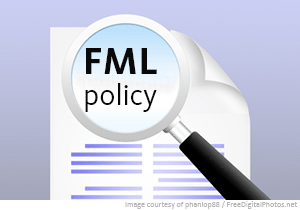
It’s that time when human resources professionals and legal counsel review employment policies for the upcoming year, and this year there are new challenges impacting family and medical leave. The U.S. Supreme Court’s decision in the Obergefell v. Hodges case is an important consideration when evaluating family and medical leave policies, specifically when determining whether or not domestic partners should be included as covered family members. Let’s look at the impact of this case so you make intentional, informed decisions about what is appropriate for your organization.
While family and medical leave policies reflect the requirements of the Family and Medical Leave Act of 1993 (FMLA) – a federal law – many organizations have expanded their programs to include domestic partners, even though they are not considered family members under FMLA. Sometimes the inclusion of domestic partners is made as a result of state laws. However, if operating in a state that does not have such legal requirements, some companies treat domestic partners as family members in their policies so employees in these relationships can have benefits equal to those employees in marriages, especially since same-sex partners did not have the right to marry under federal law until the Hodges decision in June.
Now that federal law recognizes the right for same-sex couples to marry, organizations may want to reconsider whether they want to continue covering domestic partners when not legally required by state law because doing so may result in some employees receiving two separate 12-week periods (a total of 24 weeks of leave in most cases – check the length of leave provided under state law). Here are two examples to contemplate:
- An employee takes 12 weeks to care for a domestic partner who has a serious health condition (as allowed by state law and/or company policy). After returning to work, she develops her own serious health condition. She would be able to take an additional 12 weeks under FMLA for her own health condition. The coverage for a domestic partner as a family member may be required by state law or voluntarily provided by an employer, but FMLA does not include a domestic partner as a family member. Therefore the first leave cannot be counted against her FMLA balance. Since FMLA leave cannot be waived, she is able to use 12 weeks of leave under the state law and/or company policy, and still has 12 weeks of coverage under FMLA. She will have a total of 24 weeks of protected leave.
- Employee takes 12 weeks to care for his own serious health condition (as allowed by FMLA/ state law). Then his domestic partner develops a serious health condition. In this scenario, he would not be able to take an additional 12 weeks, even if the state law/company policy includes domestic partner in the definition of family member. Both leaves were exhausted because FMLA ran concurrently with the state leave and/or leave provided by company. FMLA leave taken first will eliminate the “double leave” because the state/company policy leave runs concurrently.
Employers must, in addition to considering legal requirements, also determine what is suitable for their cultures and business needs. While equal right to marriage is now available, many individuals still value the committed relationship of a domestic partnership – same or opposite sex – and do not plan to get married but want access to the same benefits their married colleagues have. Additionally, employers may want their employees to have the same benefits regardless of the jurisdiction and choose to use the most generous jurisdiction as the model.
We’re experiencing a trend in which state and local employment-related laws are being passed that may vary, even slightly, from one jurisdiction to another. As a result, it is becoming increasingly difficult to have employment policies that apply in all states uniformly. A family and medical leave policy is one of many that should be evaluated to ensure that legal compliance, business needs and culture are aligned.
Stephanie Simpson, SVP, Disability & Absence Management Practice & Compliance